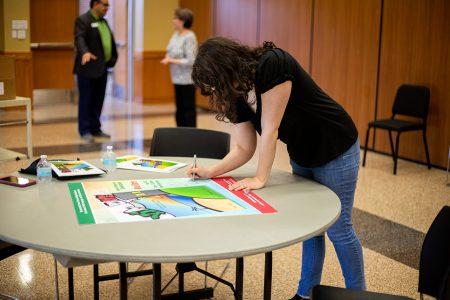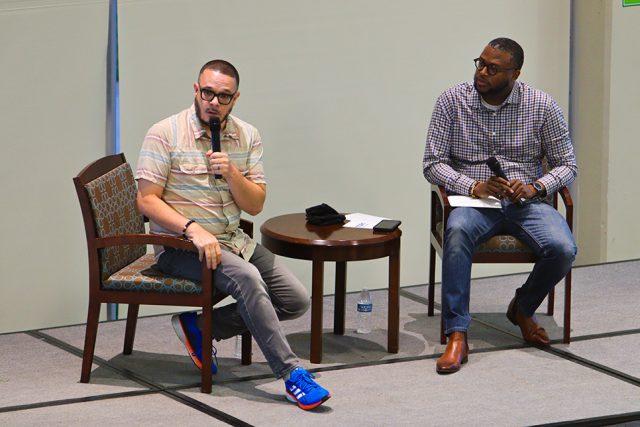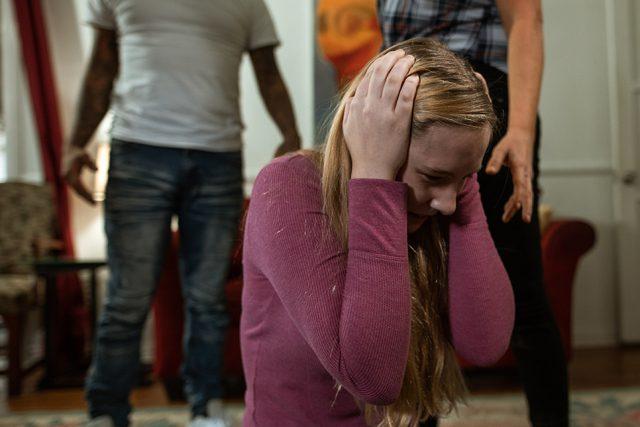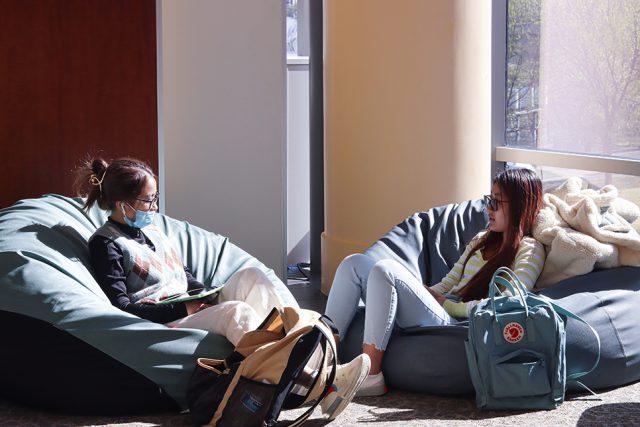
Joel Solis/The Collegian
JOSÉ ROMERO
editor-in-chief
collegian.editor@tccd.edu
The title of SE Campus’ Vía Libre magazine translates to “free way,” which is the guiding principle behind the primarily student-made publication.
“Having a free path in thought is important for inspiration, and that is what we want in the student, freedom to express themselves without obstacles,” SE Spanish associate professor Angel Hidalgo said.
Since 2019, the magazine was usually printed every spring semester, but COVID put it on hiatus. But, April 20, students and department of world languages instructors celebrated the release of its third volume.
“All the students that have participated in the previous volumes, and this volume, have brought so much energy into it,” SE humanities instructional associate Anel Herrera said. “You have to have the passion and energy to do this. If you don’t, then you’re kind of forcing them to write something they don’t want, and that doesn’t translate well.”
The magazine compiles the work of students enrolled in Spanish 1411, 1412, 2311 and 2312. For those who want a copy, it can be grabbed at the SE Spanish labs.
It consists of short stories, poems, movie reviews and more, all written in Spanish. Hidalgo and Herrera serve as editors for all the content.
The language is the only consistency in the magazine. Each piece varies conceptually from one another.
SE students Emily Harbaugh and Nabaa Ali worked as a group to contribute two pieces to the magazine. One is a poem about spring titled “La tercera temporada,” and the other is “Tulipanes Morados,” a short story inspired by a Middle Eastern folk tale.
“There are seven purple tulips in a garden,” Harbaugh said, explaining the plot of the short story. “There’s this gardener who happens upon the garden, which is right outside of the castle. These seven tulips are wives who have died and reincarnated themselves as tulips.”
One of the tulips is a witch. She can speak to the gardener, so she explains to him how he can bring the wives back to life.
“It gets a little bit dark,” she said. “We really enjoyed writing it.”
Since the magazine relies heavily on students to contribute material, Harbaugh did the illustrations for the poem and story.
Most of the imagery used in the magazine was provided by students. The front cover was made by SE student Ryan Wong and depicts a tropical sunrise with the title “Vía Libre” in Mexico’s green, white and red color scheme. The design of the pages is minimalistic, usually adorned with the text of the piece and one or two images that connect with the subject.
The imagery that coincides with SE student Mellisa Brown’s poem “El Morado” is particularly personal.
“Morado” means “purple” in English, a color important to Brown for a couple of reasons. Firstly, it was her childhood nickname, and secondly, it reminds her of the late artist Prince.
“When I see the color purple, it just makes me happy,” she said.
The page has an illustration of Prince below her poem that was drawn by her brother. Prince’s story inspires Brown, so she wanted to pay homage to him.
Crafting the poem was a difficult process for her. She used to write poetry when she was younger but, as she got older, she stopped.
SE student Hope Rohlin wrote “Los Tres Ojos de Cristal,” the longest piece in the magazine and one of Hidalgo’s favorites.
“I’ve written a lot of short stories,” Rohlin said. “Creative writing is something I’m interested in. I also play a lot of role-playing games like [Dungeons and Dragons] and whatnot, so that inspires a lot of ideas for stories.”
Rohlin also illustrated the art surrounding her story.
“Los Tres Ojos de Cristal” was originally written in English but was translated by Rohlin’s partner Marian Ramos.
Initially, Rohlin was concerned that some parts could get lost in translation, but after both Ramos and Hidalgo looked at it, she was confident it translated well.
“The Spanish language is one of the most beautiful languages,” Rohlin said. “It’s very succinct, very precise, and I really like that about it. It’s just not like that with English. In Spanish, it’s very clear what you’re saying.”
Hidalgo raised his hands to his head, motioning outward, making the sound of an explosion, and said that’s what happens when his native English-speaking students think or do something in Spanish.
“If [students] want to do something, they can do it,” he said. “Don’t put obstacles in your life. Do it.”




































